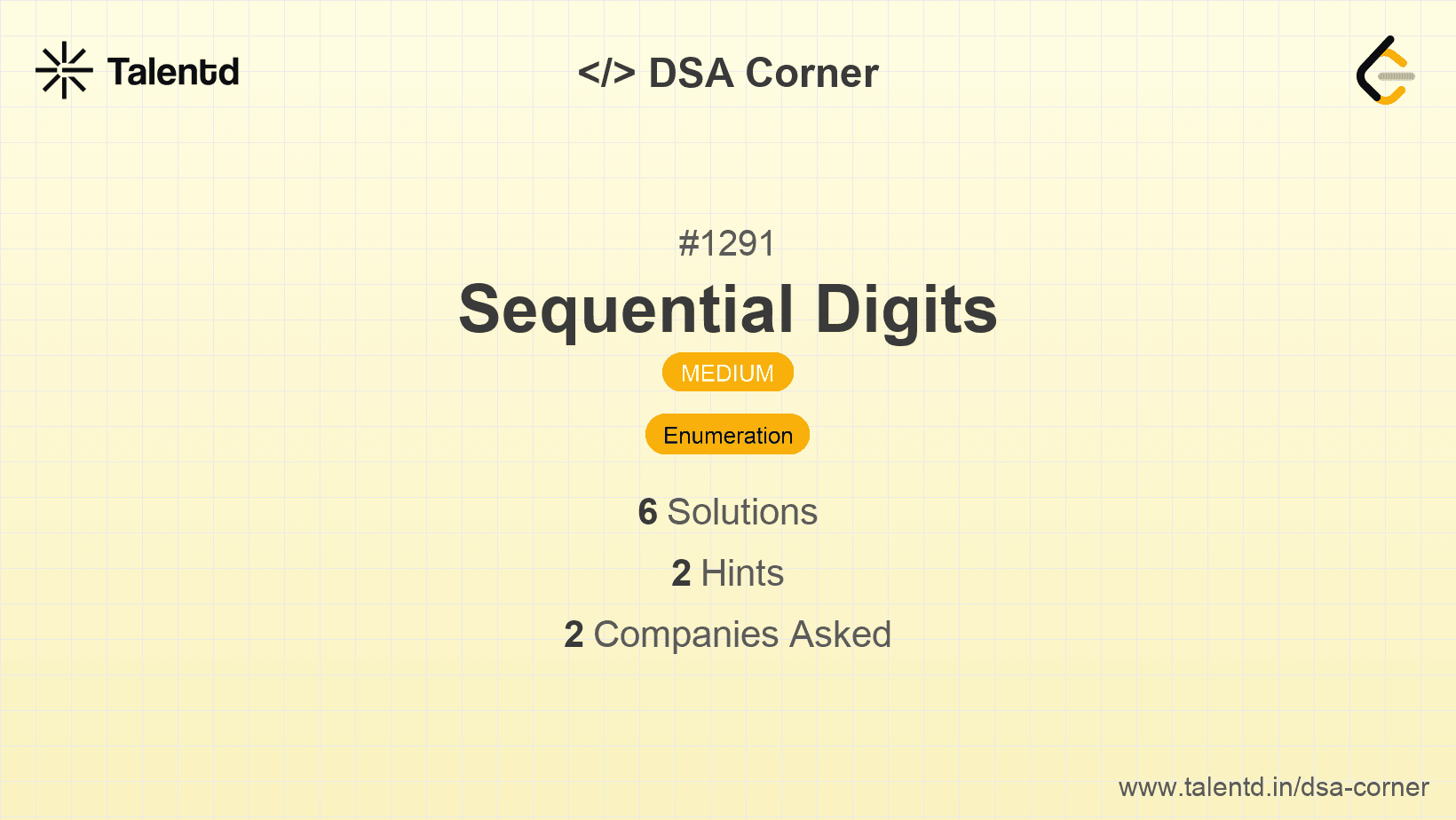
Sponsored
Sponsored
This approach involves generating all possible sequential digit numbers and then filtering them to find the ones within the given range [low, high].
Sequential digit numbers can be viewed as forming an arithmetic sequence where the difference between consecutive digits is one. Starting with single-digit numbers, we generate all possible sequential numbers by adding the next digit until the number exceeds the upper limit. By maintaining a list of such numbers, we can iterate over this list and select numbers that fall within the specified range.
Time Complexity: O(1) - Determined by the fixed number of sequential digits.
Space Complexity: O(1) - Space used is constant due to the limited number of sequential digit numbers.
1def sequentialDigits(low, high):
2 result = []
3 for start in range(1, 9):
4 num = next_num = start
5 while next_num <= 9:
6 if low <= num <= high:
7 result.append(num)
8 next_num += 1
9 num = num * 10 + next_num
10 return sorted(result)This Python function initializes a list result to store potential sequential digit numbers. By iterating the start value from 1 through 9, we form an initial number num and apply a while loop to generate sequential numbers by appending the next digit. For each valid num, we check if it lies within the range [low, high] and add it to the result.
Another approach utilizes a sliding window to generate possible sequences. By sliding over a pre-defined string of digits from '1' to '9', we construct numbers by considering substrings of increasing length. If digits form a number larger than high, we stop further expansion of that sequence.
Time Complexity: O(1) - Since there are maximum 45 possible numbers derived from the digit string of length 9.
Space Complexity: O(1) - Limited and fixed space occupation.
1def sequentialDigits(low, high):
2 result = []
3This approach involves generating all possible sequential digits by using a string representation of numbers and sliding over them with different lengths. By maintaining a starting digit, we can build numbers by appending increasing numbers to it.
Time Complexity: O(1) relative to the constant set of sequential digits.
Space Complexity: O(1) for results storage, limited by specific constraints.
1def sequentialDigits(low, high):
2 results =This approach uses an iterative method to generate numbers by extending in a breadth-first manner. Starting from each single-digit as a potential number, extend by appending one higher digit until the maximum range limit is reached.
Time Complexity: O(1) for the bounded number of operations as digits are limited.
Space Complexity: O(1) with respect to storing valid outputs within range constraints.
1import java.util.ArrayList;
2import
This solution uses a predefined string '123456789' to simulate a sliding window effect. By varying the window length from 2 to 9, it generates numbers by converting substrings to integers. Valid numbers are collected in the list result.
The above function iterates over possible lengths of sequential numbers fitting in the range dictated by the number of digits in low and high. It slides over the sequential string "123456789" and creates numbers of a specific length. If a generated number is within the range, it's appended to a result list.
This Java solution utilizes a queue to explore the current number by appending a higher digit, similar to how BFS explores levels of a graph. The digits are expanded sequentially until the high constraint is breached.